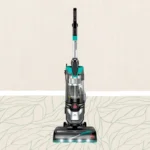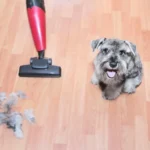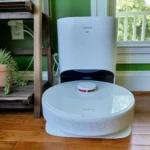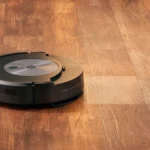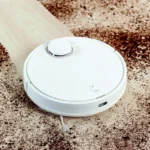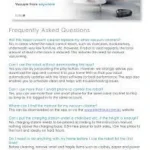You just got your hands on the latest smart vacuum cleaner and can’t wait to try it out. But there’s one problem – how will your furry friend react? Introducing a new piece of machinery into your home can be stressful for your pet, causing anxiety and fear. That’s why it’s important to follow these 5 essential tips to ensure that your pet is comfortable with the new vacuum cleaner. From familiarizing your pet with the device to providing it with a safe space, we’ve got you covered to make this transition as smooth as possible. So let’s dive in and discover how you can make your pet’s introduction to a smart vacuum cleaner a positive and stress-free experience.
Tip 1: Familiarize your Pet with the Vacuum
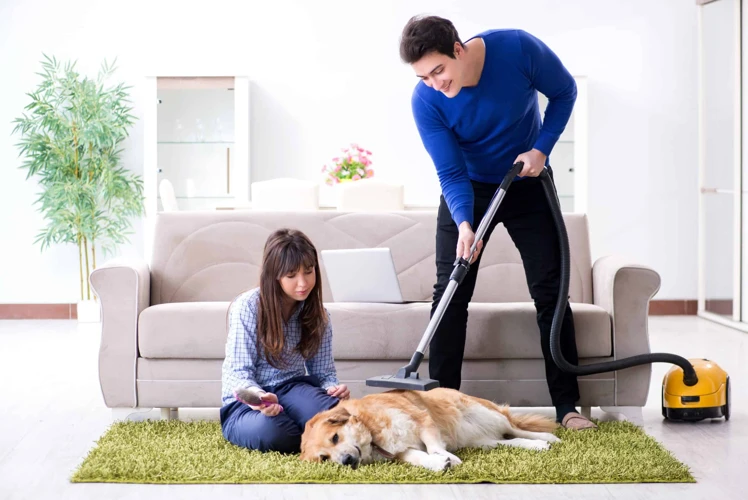
It’s no secret that pets can sometimes feel anxious around new things in their environment. This includes the arrival of a new smart vacuum cleaner. To ensure your furry friend stays calm and happy during your cleaning routine, it’s important to familiarize them with the device. But how can you achieve that? In the following sections, we’ll explore two effective techniques for introducing your pet to a smart vacuum cleaner gradually and without stress. If you have a scared pet, make sure to check our previous article for helpful tips.
Start Slowly
When it comes to introducing your pet to a smart vacuum cleaner, it’s essential to start slowly. Rushing the process can cause your pet to feel anxious, scared, or even hostile towards the vacuum cleaner. To help familiarize them with the device, follow these steps:
| Step 1: | Place the vacuum cleaner in a room where your pet is present but not too close to them. |
| Step 2: | Switch on the vacuum cleaner for a few seconds and then switch it off. |
| Step 3: | Repeat this process a few times, gradually increasing the amount of time you leave the vacuum cleaner on. |
| Step 4: | During the initial stage, do not move the vacuum cleaner to or near your pet. |
This process allows your pet to get used to the sound of the vacuum cleaner without feeling too overwhelmed or frightened. Once your pet is more comfortable, gradually introduce them to the vacuum cleaner by placing it closer to them. Remember to be patient and never force your pet to be in close proximity to the device if they become uncomfortable.
If you want to learn more about smart vacuum cleaner training for pets, check out our article on pet smart vacuum training. By avoiding common pet smart vacuum mistakes and following a few helpful tips, the introduction process can be a positive experience for both you and your furry companion.
Associate Positive Experiences
When introducing your pet to a smart vacuum cleaner, it’s important to associate positive experiences with the device. Here are some tips on how to create a positive association for your pet:
1. Use Treats: Treats are an excellent way to associate positive experiences with the vacuum cleaner. Whenever you turn on the vacuum cleaner, offer a treat to your pet. This will gradually help them understand that the vacuum cleaner is not a threat but a source of good things.
2. Play with Toys: To give your pet a fun and positive experience with the vacuum cleaner, play with them using their favorite toy while the vacuum cleaner is running. This will help to build positive associations and create a playful environment, showing your furry friend that the vacuum cleaner doesn’t need to be feared.
3. Use Positive Reinforcement: Whenever your pet shows curiosity or interest in the vacuum cleaner or attempts to investigate it, use positive reinforcement. Give them praise and treats to reinforce the positive connection.
4. Create an Atmosphere: Create a calm atmosphere when you turn on your vacuum cleaner by closing the doors to rooms where your pet doesn’t like loud noises. Playing music or turning on the TV can also help to drown out the noise of the vacuum and create a relaxing ambiance.
By following these tips, you’ll create an environment in which your pet can feel calm and safe around the vacuum cleaner. Remember, training your pet to accept and feel comfortable around the vacuum cleaner takes time and patience, so treat it as an ongoing process. For more information on pet smart vacuum training, visit pet-smart-vacuum-training.
Tip 2: Train Your Pet to Stay Calm
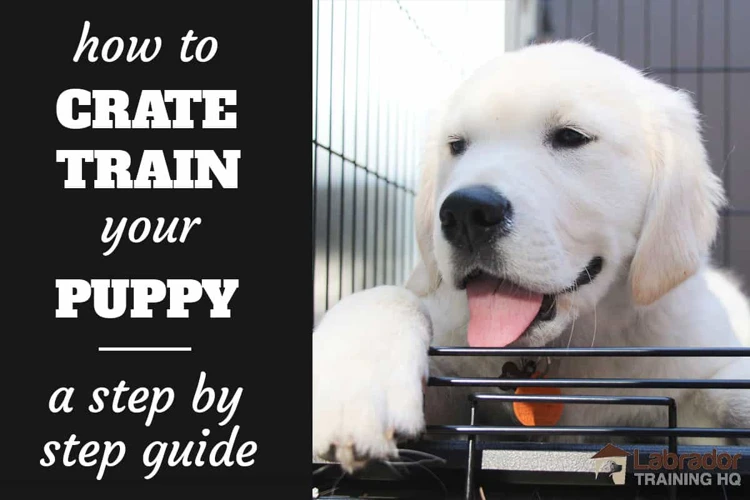
One of the most important aspects of introducing your pet to a smart vacuum cleaner is teaching them to stay calm during the cleaning process. This can be a challenging task if your pet is anxious or easily frightened by loud noises and unfamiliar objects. However, with some patience and the right training techniques, you can help your furry friend feel more comfortable around your cleaning tool. In the following sections, we’ll explore some tips for training your pet to stay calm during vacuum cleaning, so you can keep your home sparkling clean without stressing out your pet. Make sure to check out our article on common mistakes to avoid when introducing your pet to a smart vacuum cleaner for more insights.
Positive Reinforcement
Positive reinforcement is a training technique that encourages good behavior through the use of rewards or praise. When introducing your pet to a smart vacuum cleaner, positive reinforcement can be a powerful tool in helping them feel more comfortable and at ease.
Here are some examples of positive reinforcement you can use:
| Pet Behavior | Reward |
|---|---|
| Approaches vacuum without fear | Verbal praise, such as “Good job!” or a small treat |
| Allows vacuum to get closer | A bigger treat, such as a piece of chicken, or a longer period of playtime |
| Sits calmly next to vacuum | An extended play session or a special toy they love |
It’s important to reward your pet each time they exhibit good behavior in the presence of the smart vacuum. With consistency, they will begin to associate the vacuum with positive experiences and feel more comfortable around it.
However, it’s important to avoid using punishment or negative reinforcement, such as yelling or scolding when your pet does not behave as expected. This can cause your pet to become anxious or fearful around the vacuum cleaner, which can cause long-term harm to your pet.
By using positive reinforcement, you can help your pet become confident around the smart vacuum cleaner, and create a positive atmosphere for both you and your furry friend. For more tips on how to keep your pet calm during vacuum cleaning time, check out our article on tips for keeping your pet calm during vacuum cleaning and avoid pet owner mistakes by reading smart vacuum cleaner mistakes that pet owners make for a more comfortable life with your pet.
Repetition and Consistency
Repetition and consistency are key when training your pet to stay calm around a smart vacuum cleaner. Repetition helps your pet to understand what is expected of them and how to behave around the vacuum cleaner. Consistency is important because changing the rules or the way you train your pet can be confusing for them.
To start the training process, choose a specific time each day to introduce the vacuum cleaner. This creates a routine that your pet will become accustomed to. Start with short training sessions that gradually increase in length over time. Reward your pet with praise, treats, or playtime after they have remained calm during the training session.
During each training session, use a consistent set of commands to teach your pet what they need to do. For example, you might say “stay” when the vacuum cleaner is turned on or “come” when you want your pet to move away from it. Use positive reinforcement when your pet responds correctly, and repeat the commands consistently until your pet understands what is expected of them.
Remember that training your pet to stay calm around a vacuum cleaner is a process and will take time. Be patient and consistent with your training sessions. Eventually, your pet will learn to associate the sound and sight of the vacuum cleaner with positive experiences and will remain calm and relaxed in its presence.
Tip 3: Give Your Pet a Safe Space
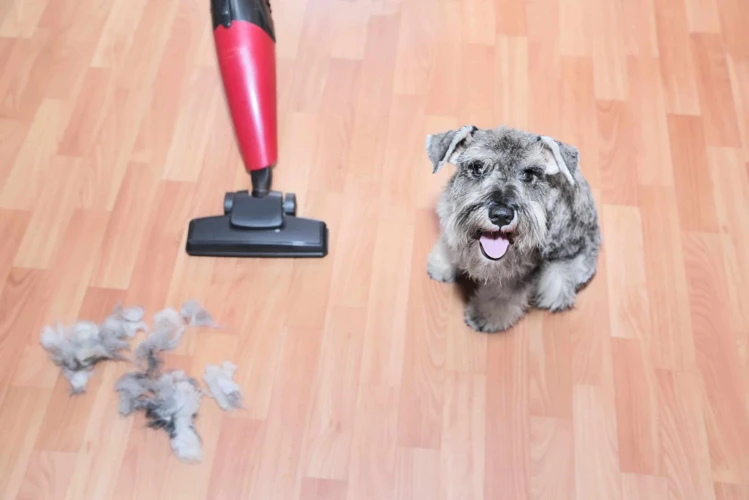
As you start to introduce your pet to your new smart vacuum, it’s important to make sure they have a safe space where they can feel comfortable and secure. Pets can be easily stressed out by the unfamiliar noise and movement of the vacuum, so taking steps to create a safe environment is crucial. In this section, we will discuss ways to ensure your pet’s comfort during vacuuming.
Avoid Vacuuming in Certain Areas
It’s important to consider which areas of your home your pet feels most comfortable in before introducing them to a smart vacuum cleaner. To avoid overwhelming your furry friend, make a list of the areas in your home where your pet likes to spend time.
Once you have identified these spaces, designate them as pet-friendly zones and avoid vacuuming in these areas while your pet is present. For example, this could be your pet’s favorite cozy corner or their bed. By avoiding these areas, you are providing a safe space for your pet to retreat to if they feel anxious or overwhelmed by the vacuum cleaner.
In addition to avoiding pet-friendly zones, it’s also important to be mindful of areas in your home where your pet may feel threatened or uncomfortable. These areas may include their food and water bowls, their litter box, or their favorite toys. Create a list of these areas and treat them as no-go zones for your smart vacuum cleaner.
By avoiding vacuuming in these areas, you are showing your pet that you respect their personal space and boundaries. This can be especially important for pets who are anxious or easily stressed.
Overall, taking the time to identify pet-friendly and no-go zones in your home can help your pet feel more comfortable and secure when you introduce them to a smart vacuum cleaner.
Provide a Comfortable Place to Retreat
It’s important to make sure that your pet has a safe and comfortable space to retreat to when they feel overwhelmed or stressed by the presence of the smart vacuum cleaner. This will help to reduce their anxiety levels and create a positive association with the vacuum cleaning process. Here are some tips to help you provide a comfortable retreat for your furry friend:
- Choose a Quiet Spot: Select an area in your home that is away from the noise and commotion of the vacuum cleaner. This could be a cosy corner in the living room, a peaceful bedroom or even a quiet hallway.
- Add Some Comforts: Once you have chosen the location for your pet’s safe space, make it comfortable and inviting. You can add a soft blanket or cushion, a favourite toy or even some treats to keep them occupied.
- Consider a Crate: Some pets feel more secure in a crate, especially if they are used to being crate-trained. If you think your pet would feel better in a crate, make sure it’s large enough for them to move around in and that they have enough water and food.
- Allow your Pet to Come and Go: Throughout the vacuum cleaning process, make sure that your pet has the freedom to enter and leave their safe space as they please. This way, they can feel more in control of their environment and will be less likely to feel trapped or anxious.
By providing your pet with a comfortable and secure retreat, you can help to reduce their stress levels and make the vacuum cleaning process more manageable for them. Remember to always monitor your pet’s reaction to the vacuum and adjust their retreat area as necessary to keep them happy, healthy and at ease.
Tip 4: Monitor Your Pet
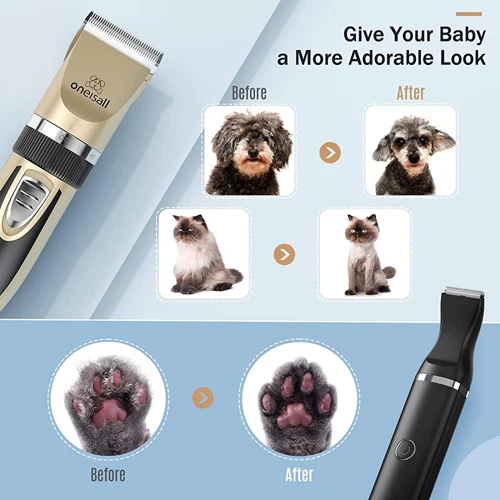
As much as we love our furry friends, we can’t always predict how they’ll react to new experiences. When it comes to introducing them to a smart vacuum cleaner, it’s important to keep a watchful eye and stay alert to any signs of distress. In this section, we’ll explore some tips for monitoring your pet during the cleaning process, so that you can ensure their safety and comfort. Let’s dive in.
Check for Signs of Distress
As you introduce your pet to a smart vacuum cleaner, it’s crucial to observe them for any signs of distress. Pets can be easily intimidated or frightened by new items in their environment, especially if they’re loud and move around. Your pet’s safety and well-being should always be your top priority.
To help you monitor your pet and identify any signs of distress, we have compiled a list of behaviors to watch out for. These behaviors may indicate that your pet is not comfortable with the smart vacuum cleaner, and you should pause the cleaning process to address their needs.
We recommend creating a table to easily keep track of the behaviors your pet displays during the cleaning process. This table will help you keep an eye on their reactions and adjust your cleaning routine accordingly. Here’s an example of what your table might look like:
| Signs of Distress | What it Means | What to Do |
|---|---|---|
| Pinned ears and low body posture | Your pet is showing fear and anxiety. | Stop the vacuum cleaner and try to calm your pet down. Consider decreasing the vacuum’s noise level or introducing some positive reinforcement. |
| Excessive panting or drooling | Your pet is stressed and uncomfortable. | Turn off the vacuum cleaner and give your pet some space to relax. Try to create a positive association with the smart vacuum cleaner by offering treats or toys. |
| Running away or hiding | Your pet is scared and trying to flee the situation. | Stop the vacuum cleaner immediately and let your pet calm down in a secure location. Don’t force your pet to confront their fears; instead, gradually introduce them to the vacuum cleaner over time. |
Remember that it’s entirely normal for pets to be scared of new things, and it might take some time for them to get used to the smart vacuum cleaner. By observing your pet’s behavior and implementing positive reinforcement techniques, you can make the introduction process as smooth and stress-free as possible.
Adjust Your Cleaning Schedule
As you introduce your pet to the smart vacuum cleaner, it’s crucial to keep a close eye on their behavior. If you notice that your pet is becoming stressed or anxious during vacuuming, it’s time to make some changes to your cleaning schedule. Here are some tips to help you adjust your cleaning schedule and make it more pet-friendly:
- Reduce Frequency: If you typically clean your home every day, consider reducing it to once or twice a week. This will give your pet some much-needed downtime to relax and get used to the vacuum.
- Change the Time: If you usually vacuum during the day, try switching to the evening or early morning when your pet is less active. This will help minimize disruptions and keep your pet calm.
- Test Different Rooms: Pay attention to which rooms your pet is more comfortable in when you’re vacuuming. Start by vacuuming those rooms first and then gradually work your way to the more challenging areas.
Keep in mind that every pet is unique, and what works for one may not work for another. Be patient and open to different scheduling options until you find what works best for your furry friend. Adjusting your cleaning schedule may take some trial and errors, but the effort will pay off when your pet can calmly coexist with the smart vacuum cleaner.
Tip 5: Keep Your Vacuum Clean
Now that you and your pet have adjusted to the presence of a smart vacuum cleaner, it’s essential to maintain the device to ensure its effectiveness and longevity. Neglecting to clean the vacuum can lead to pet hair build-up, decreased suction power, and unpleasant odors. It’s crucial to follow these tips for keeping your vacuum clean and well-maintained. By doing so, you can ensure that your vacuum cleans your home effectively and prevent your pet from becoming anxious due to unfamiliar or unpleasant smells emanating from the device.
Regular Maintenance
Keeping your smart vacuum cleaner in good condition is crucial to its effectiveness and longevity, especially when it comes to cleaning up after your pet. Regular maintenance should be a top priority for any pet owner who wants to make the most of their smart vacuum. Here’s what you need to know about regular maintenance:
– **Cleaning the filters:** One of the most important things you can do to keep your smart vacuum clean is regularly clean or replace the filters. Over time, pet hair, dander, and other debris can clog up the filters, which can reduce the vacuum’s suction power. Depending on your vacuum, you may need to clean the filters weekly or monthly.
– **Emptying the dirt bin:** Another essential task is emptying the dirt bin regularly. This is especially important for pet owners, as pet hair and dander can accumulate quickly, leading to a decrease in suction power. Depending on how much your pet sheds, you may need to empty the bin after every cleaning or every few cleanings.
– **Checking for blockages:** Occasionally, you should also check your smart vacuum for blockages. Pet hair and other debris can get stuck in the vacuum’s various parts, which can reduce its effectiveness or even cause damage over time. If you notice a decrease in suction power or strange noises, it may be time to inspect the inside of the vacuum and clear any blockages.
– **Cleaning the brushroll:** Pet hair can easily become wrapped around the brushroll or other parts of your smart vacuum cleaner, which can reduce its effectiveness or even cause damage. To prevent this, it’s important to regularly clean the brushroll and remove any tangled hair or debris. Depending on your vacuum, you may need to do this weekly or monthly.
By taking care of these regular maintenance tasks, you can ensure that your smart vacuum cleaner remains effective when it comes to cleaning up after your pet. Remember to consult your vacuum’s user manual for specific instructions on how to care for your particular smart vacuum model.
Eliminate Pet Hair Build-up
As a pet owner, you’re well aware of the serious issue that pet hair can cause in your home. When introducing your pet to a smart vacuum cleaner, it is important to take special care to maintain and clean it frequently in order to avoid any damage, unwanted smells, or pet hair build-up. Here are some tips on eliminating pet hair build-up:
Regular Maintenance
One of the simplest ways to eliminate pet hair build-up is to maintain your vacuum regularly. This includes regularly changing the vacuum’s filters, emptying the dustbin, and removing any hair or debris from the brush roll or other moving parts. Regular maintenance ensures that your vacuum operates smoothly and efficiently and reduces the risk of clogs, blockages, or damage to your machine.
Change Filters Often
If you have pets that shed a lot, it is important to change your vacuum’s filters more frequently than usual. These filters are designed to capture pet hair and dander, but over time, they can become clogged with too much debris. A clogged filter can cause your vacuum to lose suction power, which makes it less effective at cleaning your floors.
Invest in a Pet-Friendly Vacuum
If you have a pet that sheds a lot, consider investing in a vacuum that is designed specifically for homes with pets. These vacuums typically have stronger suction power, special filters that remove pet hair and dander, and specialized attachments that are designed for cleaning upholstery, stairs, and other hard-to-reach areas.
Use the Right Attachments
Using the right attachments can make a big difference in your ability to eliminate pet hair build-up. Consider using a pet hair brush attachment to clean upholstery, bedding, and other surfaces that tend to collect pet hair. You can also use a crevice tool attachment to clean in tight spaces such as between couch cushions or in corners.
Adopt a Cleaning Routine
Regularly cleaning your floors and furniture can help reduce pet hair build-up. Consider adopting a cleaning routine that includes vacuuming your floors daily and washing your pet’s bedding regularly. This will help reduce the amount of hair that is floating around your home and settle on your furniture and floors.
Conclusion
Eliminating pet hair build-up is an important aspect of maintaining your smart vacuum cleaner. By taking the time to do regular maintenance, changing filters often, investing in a pet-friendly vacuum, using the right attachments, and adopting a cleaning routine, you can keep your home clean and free of pet hair.
Conclusion
In conclusion, introducing your pet to a smart vacuum cleaner may seem like a daunting task, but with patience, consistency, and positive reinforcement, it can be a successful and stress-free experience for both you and your furry friend. Remember to start slowly and associate positive experiences with the vacuum to familiarize your pet with its presence. Train your pet to stay calm with positive reinforcement and consistency, and provide a safe space for them to retreat to during cleaning sessions. It’s also important to monitor your pet for signs of distress and adjust your cleaning schedule as needed. Keeping your vacuum clean and well-maintained is also crucial, as build-up of pet hair and debris can worsen allergies for both you and your pet. With these tips in mind, you and your pet can enjoy a cleaner home without any added stress or anxiety.
Frequently Asked Questions
What is a smart vacuum cleaner?
A smart vacuum cleaner is a robotic device that can clean floors using sensors and mapping technology.
Will my pet be afraid of a smart vacuum cleaner?
Some pets may be initially fearful, but with proper introduction and training, they can adjust to the device.
How do I familiarize my pet with the smart vacuum cleaner?
Start with slow introductions and associate positive experiences, such as treats or toys.
Can I use positive reinforcement to train my pet to stay calm around the vacuum?
Yes, positive reinforcement can be an effective method to train your pet to stay calm around the smart vacuum cleaner.
Why is consistency important when training my pet?
Consistency in training allows your pet to develop a routine and a better understanding of what is expected of them.
How can I give my pet a safe space while using the vacuum?
Avoid vacuuming in certain areas where your pet likes to spend time and provide a comfortable place for them to retreat.
What are some signs of distress that I should look for in my pet?
Signs of distress may include pacing, hiding, excessive panting, and whimpering or vocalizing.
Why is it important to monitor my pet while using the vacuum?
Monitoring your pet can help prevent accidents or injuries and allow you to adjust your cleaning schedule if necessary.
How do I eliminate pet hair build-up in my smart vacuum cleaner?
Regular maintenance, such as cleaning the brushes and filters, can help eliminate pet hair build-up in your smart vacuum cleaner.
What should I do if my pet continues to be fearful of the smart vacuum cleaner?
You may want to seek the advice of a professional dog trainer or animal behaviorist to help your pet overcome their fear of the device.

